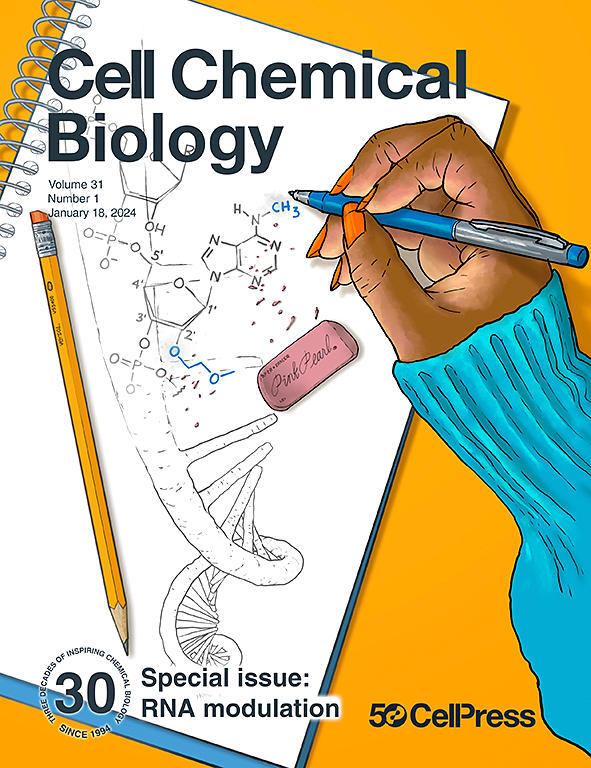抗疟疾药物耐药性的新进展
IF 7.2
1区 生物学
Q1 BIOCHEMISTRY & MOLECULAR BIOLOGY
引用次数: 0
摘要
在这一期的《细胞化学生物学》中,Bopp等人发现疟原虫对卤氟酮的抗性是由一种氨基酸转运体PfApiAT2的突变介导的,而不是卤氟酮的靶点脯氨酸- trna合成酶的突变。这种快速而独特的耐药机制突出了氨基酸转运作为一种有前途的药物发现途径。本文章由计算机程序翻译,如有差异,请以英文原文为准。
New twists in anti-malarial drug resistance
In this issue of Cell Chemical Biology, Bopp et al.1 discover that malaria parasite resistance to halofuginone is mediated by mutations in PfApiAT2, an amino acid transporter, rather than halofuginone’s target prolyl-tRNA synthetase. This rapid and distinctive resistance mechanism highlights amino acid transport as a promising avenue for drug discovery.
求助全文
通过发布文献求助,成功后即可免费获取论文全文。
去求助
来源期刊

Cell Chemical Biology
Biochemistry, Genetics and Molecular Biology-Molecular Medicine
CiteScore
14.70
自引率
2.30%
发文量
143
期刊介绍:
Cell Chemical Biology, a Cell Press journal established in 1994 as Chemistry & Biology, focuses on publishing crucial advances in chemical biology research with broad appeal to our diverse community, spanning basic scientists to clinicians. Pioneering investigations at the chemistry-biology interface, the journal fosters collaboration between these disciplines. We encourage submissions providing significant conceptual advancements of broad interest across chemical, biological, clinical, and related fields. Particularly sought are articles utilizing chemical tools to perturb, visualize, and measure biological systems, offering unique insights into molecular mechanisms, disease biology, and therapeutics.
 求助内容:
求助内容: 应助结果提醒方式:
应助结果提醒方式:


